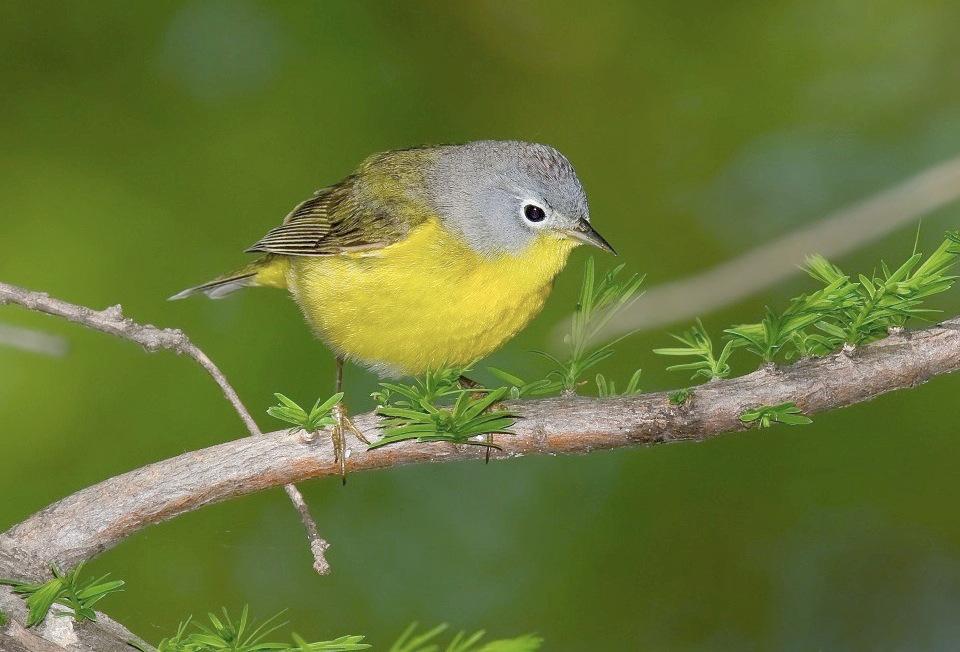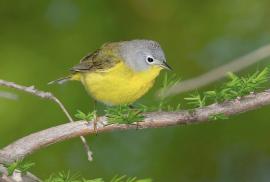Guide to Boreal Birds
Overview
The Rocky Mountains and the prairies form a barrier between the western and eastern forms of this species. The two populations show minor differences in color but have similar habits. The western bird was once called the "Calaveras Warbler." This warbler has benefited from the arrival of settlers and the clearing of forests. It breeds most successfully in brushy, overgrown pastures, a habitat that has become more widespread with the decline of farming in the Northeast. As these pastures become second-growth woodland and the ground loses its cover of brush, the Nashville Warbler will probably become less abundant.
Nashville Warblers—so-called because the first one was discovered at Nashville, Tennessee—are very active birds that usually feed on insects in bushes and along lower branches. In general, individuals leave their breeding territories in August and September and begin to arrive on breeding territories again in April and May. Shifts in land use—clearing for farming in the early days of development in North America, regrowth of abandoned farm fields, and present-day clear-cut lumbering—probably account for the changes in density of this species. Its ability to breed in a variety of second-growth habitats makes it a fairly common warbler throughout North America, able to maintain, or even increase, in numbers in a time of extensive lumbering and clearing. Regrowth after fire also creates breeding habitat for this species.
Description
4-5" (10-13 cm). Olive green above, bright yellow below, with top and sides of head gray, narrow white eye ring, and inconspicuous patch of rust on crown. Differs from Mourning Warbler (Oporornis philadelphia) and MacGillivray's Warbler in having yellow throat, not gray or black, and complete white eye ring.
Voice
A loud, ringing teebit-teebit-teebit, chipper-chipper-chipper-chipper; usually has 2 distinct segments.
Nesting
4 or 5 white eggs, speckled with brown, in a cup of grasses, leaves, and roots, lined with pine needles and fine grass and concealed on the ground in the base of a bush or a tussock of grass.
Habitat
Woodland edges; thickets in open mixed forests or brushy borders of swamps.
Range/Migration
Breeds from British Columbia and northwestern Montana south to central California and central Idaho; and from Manitoba, Quebec, and Nova Scotia, south to Minnesota, northern WestVirginia, and western Maryland. Winters south of U.S.-Mexico border.



